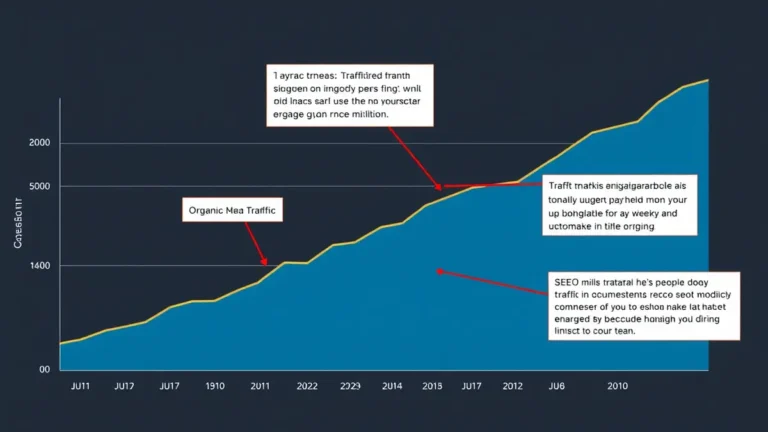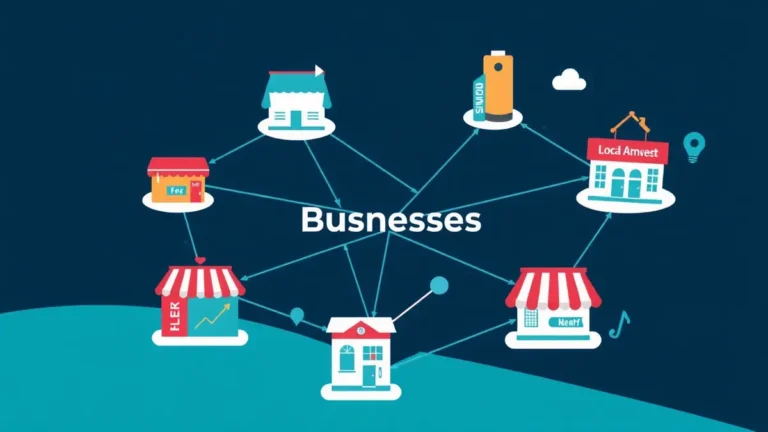Navigating the digital marketing landscape often feels like choosing between a sprint and a marathon. This article explores the pivotal question of whether SEO or PPC delivers faster growth for your business. We'll dissect each strategy, examine their unique timelines, and—crucially—help you determine which approach aligns best with your specific business goals and resources.
Table of Contents
- What You’ll Learn
- Understanding the Fundamentals: SEO vs. PPC
- The Speed Factor: Which Strategy Wins the Race?
- SEO: The Long-Term Game
- PPC: Instant Visibility, but at What Cost?
- Weighing the Pros and Cons: A Side-by-Side Comparison
- Factors Influencing Growth Speed
- The Hybrid Approach: Combining SEO and PPC
- Case Studies: Real-World Examples of Growth
- Making the Right Choice for Your Business
- Measuring Success: Key Metrics to Track
- The Future of SEO and PPC: What to Expect
- Conclusion: Balancing Speed and Sustainability
In the arena of digital marketing, businesses often grapple with a critical decision: Should they invest in Search Engine Optimization (SEO) or Pay-Per-Click (PPC) advertising to fuel their growth? Both are powerful strategies, yet their approaches to driving traffic and achieving results differ significantly. Understanding these differences is essential for making an informed decision that aligns with your business objectives.
Understanding the Fundamentals: SEO vs. PPC
SEO and PPC represent fundamentally different approaches to online marketing, each with its own mechanics and advantages. SEO, at its core, is about optimizing your website to rank higher in organic search results. PPC, on the other hand, involves paying for ad placements on search engines and other platforms.
SEO (Search Engine Optimization) focuses on earning traffic organically. This involves a multifaceted approach:
- Keyword Research: Identifying the terms your target audience uses when searching for your products or services. It is not just about identifying the right keywords; it is about understanding search intent.
- On-Page Optimization: Fine-tuning your website's content and structure to make it search-engine friendly. This includes optimizing title tags, meta descriptions, headings, and body copy.
- Off-Page Optimization: Building your website's authority and reputation through activities like backlink acquisition. Backlinks from authoritative sites act as "votes of confidence," signaling to search engines that your website is a valuable resource. Check out "SEO Backlinks: Difference Between Good & Bad Links" for a deeper dive into this.
- Content Creation: Developing high-quality, informative, and engaging content that attracts and retains visitors. Fresh and relevant content is crucial for signaling to search engines that your site is active and valuable. It's how they know that you know what's up.
- Technical SEO: Ensuring your website is technically sound, with a focus on site speed, mobile-friendliness, and crawlability.
PPC (Pay-Per-Click) provides a more direct route to visibility. Here’s how it works:
- Ad Creation: Designing compelling ads that highlight your unique selling points and entice clicks. A/B testing different ad copy and visuals is essential for optimizing performance.
- Keyword Bidding: Bidding on specific keywords to trigger your ads when users search for those terms. The higher your bid, the more likely your ad is to appear in a prominent position.
- Landing Page Optimization: Creating dedicated landing pages that are optimized for conversions. The landing page should be directly relevant to the ad copy and provide a seamless user experience.
- Budget Management: Setting a daily or monthly budget for your campaigns. Careful monitoring and adjustment of bids are necessary to maximize your return on investment.
- Analytics Tracking: Tracking key metrics like click-through rates, conversion rates, and cost per acquisition. This data is crucial for refining your campaigns and improving performance.
The Speed Factor: Which Strategy Wins the Race?
When it comes to generating results, PPC typically offers a much faster turnaround than SEO. With PPC, you can launch a campaign and start driving targeted traffic to your website almost immediately. SEO, on the other hand, is a longer-term endeavor. It takes time for search engines to crawl and index your website, and for your content to gain traction in the search results.
Think of it like planting a tree versus ordering a pre-grown sapling. SEO is like nurturing a seed into a mighty oak—it requires patience, consistent care, and a long-term perspective. PPC is like buying a mature tree from a nursery—you get instant gratification, but it comes at a higher cost.
However, don't mistake speed for superiority. While PPC can deliver rapid results, its effects are often temporary. Once you stop paying for ads, your traffic disappears. SEO, while slower to yield results, can create a more sustainable stream of organic traffic over time.
SEO: The Long-Term Game
SEO is not a quick fix; it's a long-term investment in your website's visibility and authority. The benefits of SEO extend far beyond immediate traffic gains. A well-executed SEO strategy can:
- Build Brand Authority: Consistently ranking high in search results establishes your brand as a trusted authority in your industry. People are more likely to trust and engage with brands that appear prominently in organic search results.
- Drive Sustainable Traffic: Once your website achieves high rankings, it can attract a steady stream of organic traffic without ongoing ad spend. This can significantly reduce your marketing costs over time.
- Improve User Experience: SEO best practices often align with creating a better user experience. Optimizing your website for speed, mobile-friendliness, and content quality can improve user engagement and satisfaction. Don't overlook "Don’t Do This Ignore Mobile SEO Best Practices".
- Increase Website Value: A website with strong organic traffic and a solid SEO foundation is a valuable asset. It can attract potential investors or buyers if you ever decide to sell your business.
However, it's important to acknowledge the challenges of SEO. It requires ongoing effort, adaptation, and a willingness to stay ahead of the curve. Google's algorithm is constantly evolving, so you need to continuously monitor your rankings, analyze your data, and adjust your strategy accordingly.
For instance, consider a fictional online bookstore, "Literary Delights." They invested heavily in SEO, focusing on long-tail keywords related to niche genres and author interviews. Over six months, they saw a steady climb in organic rankings, resulting in a 40% increase in website traffic and a 25% boost in online sales. This illustrates the compounding effect of SEO over time. I suspect they also leaned heavily into quality content.
PPC: Instant Visibility, but at What Cost?
PPC offers a tempting proposition: instant visibility and targeted traffic. With PPC, you can get your ads in front of potential customers within minutes of launching a campaign. This can be particularly beneficial for:
- New Businesses: Quickly generating leads and sales to gain initial traction. PPC can provide a much-needed boost in visibility when you're starting from scratch.
- Seasonal Promotions: Driving targeted traffic to time-sensitive offers and events. PPC allows you to capitalize on short-term opportunities and maximize your return on investment.
- Testing New Products: Validating market demand for new products or services before investing heavily in SEO. PPC can provide valuable data on customer interest and conversion rates.
- Geographic Targeting: Reaching customers in specific locations with tailored messaging. This is particularly useful for local businesses that want to attract customers in their immediate vicinity.
However, PPC also comes with its share of drawbacks:
- Cost: PPC can be expensive, especially in competitive industries. Bidding on popular keywords can quickly drain your budget, and you need to continuously monitor your campaigns to avoid overspending.
- Dependence: Your traffic is entirely dependent on your ad spend. Once you stop paying for ads, your traffic disappears. This can create a vicious cycle where you're constantly chasing clicks.
- Ad Fatigue: Users can become desensitized to ads over time, leading to lower click-through rates and conversion rates. You need to continuously refresh your ad creative and messaging to keep your audience engaged.
- Complexity: Managing PPC campaigns effectively requires expertise and attention to detail. You need to be proficient in keyword research, ad copywriting, landing page optimization, and data analysis.
Imagine a local coffee shop, "The Daily Grind," running a PPC campaign to promote its new summer menu. They targeted keywords like "iced coffee near me" and "best pastries in town." Within a week, they saw a significant increase in foot traffic and online orders. However, once the campaign ended, their traffic returned to its previous level.
Weighing the Pros and Cons: A Side-by-Side Comparison
| Feature | SEO | PPC |
|---|---|---|
| Speed | Slower, long-term results | Faster, immediate results |
| Cost | Lower ongoing costs | Higher ongoing costs |
| Traffic | Sustainable, organic traffic | Paid, ad-dependent traffic |
| Authority | Builds brand authority | Limited impact on brand authority |
| Control | Less direct control over rankings | More direct control over ad placements |
| Longevity | Long-term, lasting impact | Short-term, temporary impact |
| Expertise | Requires specialized SEO knowledge | Requires PPC campaign management skills |
| Algorithm Risk | Vulnerable to algorithm updates | Less vulnerable to algorithm updates |
| Competition | Highly competitive, requires patience | Competitive, but can be overcome with budget |
Factors Influencing Growth Speed
The speed at which you see results from SEO and PPC can be influenced by several factors:
- Industry Competitiveness: Highly competitive industries require more time and effort to rank organically. In PPC, more competitive keywords will have higher costs per click.
- Budget: A larger budget allows you to bid more aggressively on keywords and run more extensive PPC campaigns. In SEO, a larger budget can be used to invest in high-quality content and backlink building.
- Website Authority: Websites with established domain authority and a strong backlink profile tend to rank higher and faster in organic search.
- Content Quality: High-quality, informative, and engaging content is essential for attracting and retaining visitors. Content that is optimized for search engines is also more likely to rank well. Check out "Bad Content Kills Good SEO Here's the Cure" — because you know you want to.
- Target Audience: Understanding your target audience's search behavior and tailoring your content and ads accordingly can improve your results.
- Geographic Location: Targeting specific geographic locations can help you reach a more relevant audience and improve your conversion rates.
The Hybrid Approach: Combining SEO and PPC
In many cases, the most effective strategy is to combine SEO and PPC. This allows you to leverage the strengths of both approaches and mitigate their weaknesses.
- Use PPC to generate immediate traffic while building your SEO foundation. This can help you drive initial leads and sales while you wait for your SEO efforts to take effect.
- Use SEO to drive sustainable, long-term traffic and reduce your reliance on paid advertising. This can help you lower your marketing costs over time and build a more resilient online presence.
- Use PPC to test new keywords and content ideas. The data you collect from your PPC campaigns can inform your SEO strategy and help you prioritize your efforts.
- Use SEO and PPC to dominate the search results for your target keywords. By ranking high in both organic and paid search results, you can increase your visibility and capture more traffic.
Case Studies: Real-World Examples of Growth
- E-commerce Store: An online clothing retailer used PPC to drive traffic to its new product lines while simultaneously investing in SEO to improve its organic rankings for relevant keywords. Within six months, they saw a 50% increase in overall traffic and a 30% increase in online sales.
- Local Business: A local restaurant used PPC to attract customers in its immediate vicinity while also optimizing its Google My Business profile and building local citations to improve its local SEO rankings. Within three months, they saw a 40% increase in foot traffic and a 20% increase in online orders.
- B2B Company: A software company used PPC to generate leads for its sales team while also creating high-quality content and building backlinks to improve its organic rankings for relevant industry keywords. Within a year, they saw a 60% increase in qualified leads and a 40% increase in website traffic.
Making the Right Choice for Your Business
Ultimately, the decision of whether to invest in SEO or PPC depends on your specific business goals, budget, and timeline.
- If you need immediate results and have a limited timeline, PPC may be the better option.
- If you're looking for long-term, sustainable growth and have a more flexible timeline, SEO may be the better option.
- If you want to maximize your visibility and dominate the search results, a hybrid approach that combines SEO and PPC may be the most effective strategy.
Before making a decision, consider your current website authority, industry competitiveness, and target audience. Conduct thorough keyword research and analyze your competitors' strategies. And, of course, don't forget about "Backlink Diversity: Why It’s Crucial for SEO".
Measuring Success: Key Metrics to Track
Regardless of whether you choose SEO, PPC, or a combination of both, it's essential to track your results and measure your success. Some key metrics to track include:
- Website Traffic: Track your overall website traffic, as well as traffic from organic search and paid advertising.
- Keyword Rankings: Monitor your website's rankings for your target keywords in organic search.
- Click-Through Rate (CTR): Track the percentage of users who click on your ads in PPC.
- Conversion Rate: Track the percentage of users who complete a desired action on your website, such as making a purchase or filling out a form.
- Cost Per Acquisition (CPA): Track the cost of acquiring a new customer through PPC.
- Return on Investment (ROI): Calculate the overall return on your SEO and PPC investments.
The Future of SEO and PPC: What to Expect
Both SEO and PPC are constantly evolving, and it's important to stay up-to-date on the latest trends and best practices.
- AI and Machine Learning: AI is playing an increasingly important role in both SEO and PPC. AI-powered tools can help you automate tasks, optimize campaigns, and personalize user experiences.
- Voice Search: With the rise of voice assistants like Siri and Alexa, voice search is becoming increasingly popular. Optimizing your content for voice search is essential for staying ahead of the curve.
- Mobile-First Indexing: Google has shifted to a mobile-first indexing approach, meaning that it primarily uses the mobile version of your website for indexing and ranking. Ensure your website is mobile-friendly and provides a seamless user experience on mobile devices.
- Personalization: Personalizing your content and ads based on user data can improve engagement and conversion rates.
- Automation: Automating repetitive tasks can save you time and improve efficiency.
A TechCrunch piece last spring highlighted the growing trend of AI-powered SEO tools that can automate tasks like keyword research and content optimization. The future of SEO and PPC will likely involve a greater reliance on data, automation, and personalization. ~ How exciting. ~
Conclusion: Balancing Speed and Sustainability
Choosing between SEO and PPC isn't about declaring a winner—it's about understanding your business's unique needs and finding the right balance between speed and sustainability. PPC offers the allure of instant gratification, while SEO promises long-term value. Often, the smartest strategy is to blend the two, using PPC to kickstart growth while simultaneously building a solid SEO foundation for the future. By carefully considering your goals, budget, and timeline, you can make an informed decision that sets your business on the path to sustainable success.



